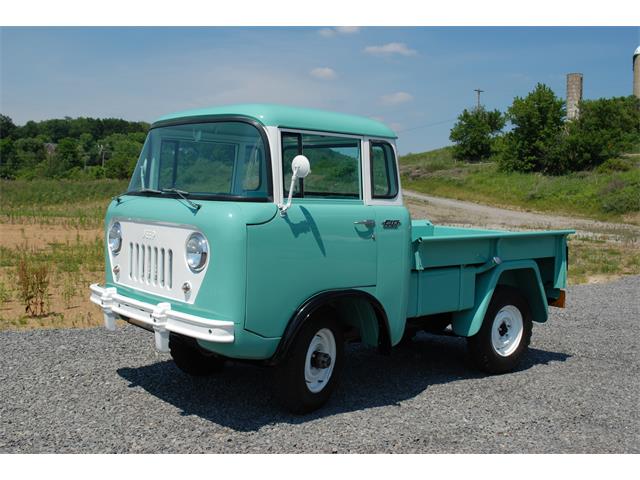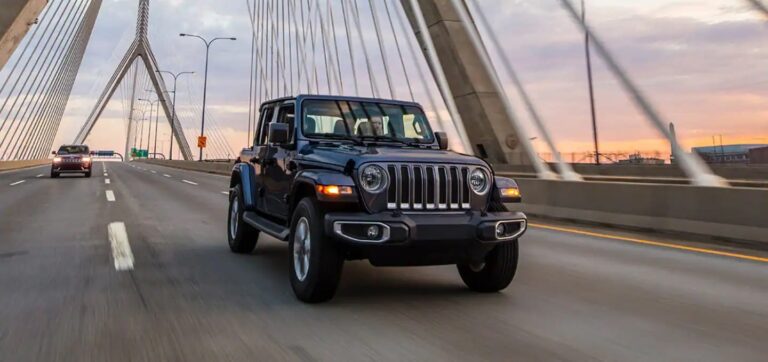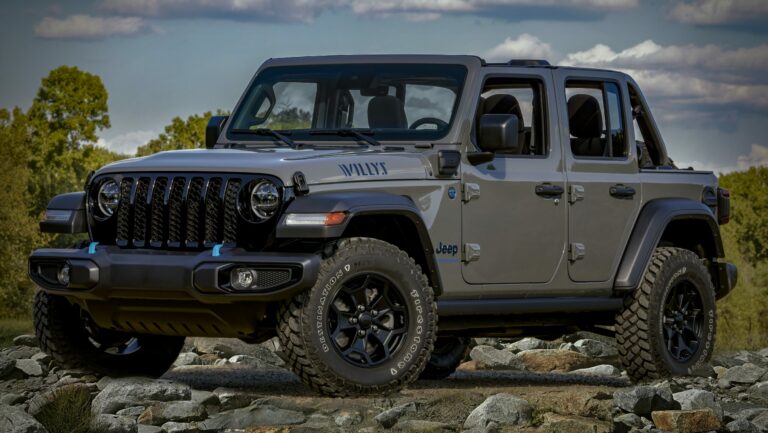1958 Jeep FC-150 For Sale: A Comprehensive Buyer’s Guide to this Iconic Forward Control Classic
1958 Jeep FC-150 For Sale: A Comprehensive Buyer’s Guide to this Iconic Forward Control Classic jeeps.truckstrend.com
In the vast landscape of automotive history, some vehicles stand out not just for their performance or luxury, but for their sheer utility, innovative design, and undeniable character. The 1958 Jeep FC-150 (Forward Control 150) is precisely one such legend. A true workhorse designed by Brooks Stevens, its cab-over-engine layout pushed the boundaries of conventional pickup truck design, maximizing cargo space in a compact footprint. Today, finding a 1958 Jeep FC-150 for sale is an opportunity to own a piece of unique automotive heritage – a vehicle that combines rugged capability with a distinctive, almost whimsical aesthetic that turns heads wherever it goes.
For enthusiasts, collectors, and those seeking a unique classic for restoration or customization, the FC-150 represents more than just a truck; it’s a statement. Its compact size, combined with legendary Jeep 4×4 capability, made it an invaluable tool for farmers, utility companies, and adventurers alike. As these vehicles become rarer, understanding what to look for when a 1958 Jeep FC-150 is for sale becomes paramount. This comprehensive guide aims to equip potential buyers with the knowledge needed to navigate the market and make an informed purchase.
1958 Jeep FC-150 For Sale: A Comprehensive Buyer’s Guide to this Iconic Forward Control Classic
The Enduring Appeal of the FC-150
The Jeep FC series, produced from 1956 to 1965, was a bold departure for Willys Motors. Unlike traditional pickups, the "Forward Control" design placed the driver and controls directly over the front axle. This innovative layout allowed for a remarkably long cargo bed relative to the vehicle’s overall length, making it incredibly maneuverable in tight spaces while still offering impressive hauling capacity.
The 1958 FC-150, specifically, sits on an 81-inch wheelbase – the same as the CJ-5 – making it incredibly agile. Powered typically by the venerable Willys F4-134 "Hurricane" overhead-valve four-cylinder engine, it offered dependable performance for its intended utility. Its quirky, almost cartoonish appearance, with its flat nose and upright stance, has cultivated a dedicated following. Owners appreciate its utilitarian honesty, its robust construction, and the undeniable charm that sets it apart from any other vehicle on the road. For many, the FC-150 is the ultimate vintage adventure rig, capable of tackling trails and hauling gear with a style that modern vehicles simply can’t replicate.
What Makes a 1958 FC-150 Special?
While all FCs share the distinctive Forward Control design, the 1958 model year holds specific characteristics that buyers might seek:
- Original Willys Power: The 1958 FC-150 typically came equipped with the F4-134 Hurricane engine, known for its reliability and torque. While many have been swapped over the years, an original engine can add to its historical value.
- Compact Dimensions: Being the smaller of the two primary FC models (the other being the larger FC-170), the FC-150 is incredibly nimble, making it easier to navigate trails or tight city streets.
- Classic Jeep Drivetrain: Featuring a three-speed manual transmission and a two-speed transfer case (Dana 18), the 1958 FC-150 offered robust 4×4 capabilities, true to Jeep’s heritage.
- Unmistakable Aesthetics: The ’58 FC-150 embodies the raw, no-frills utility vehicle design of the era, making it a favorite for those who appreciate industrial design and functional beauty.

Key Considerations When Buying a 1958 FC-150
Purchasing a classic vehicle like the 1958 Jeep FC-150 requires careful consideration. Here are critical aspects to evaluate:

1. Condition Assessment: The Foundation of Value
- Body & Frame Rust: This is paramount. FCs are notorious for rust, especially in the cab corners, floor pans, fender wells, and bed. Inspect the frame thoroughly for cracks, pitting, or repairs. Significant rust can make a vehicle a money pit.
- Engine & Drivetrain: Check for leaks, unusual noises, and proper operation of the engine, transmission, transfer case, and axles. A compression test can reveal engine health.
- Brakes & Steering: Test the brakes for effectiveness and pull. Inspect steering components for play or looseness.
- Electrical System: Old wiring can be problematic. Check lights, gauges, and accessories.
- Interior: While often utilitarian, assess the condition of the seat, dash, and any original components.

2. Originality vs. Customization
- Stock: An unmolested, original FC-150 in good condition commands a premium among collectors. Look for original paint, engine, and interior components.
- Restored/Resto-Mod: Many FCs have undergone restoration. A "resto-mod" might feature modern engines (e.g., Chevy V8, modern Jeep engines), updated suspensions, power steering, and disc brakes. These can be more practical for modern driving but might not appeal to purists.
- Off-Road Build: Some FCs are built purely for off-road use, featuring lifted suspensions, larger tires, and heavy-duty modifications.
3. Documentation and History
- Ensure a clear, transferable title exists.
- Service Records: Any history of maintenance or restoration work adds significant value and peace of mind.
- Build Sheets/Original Manuals: Rare but invaluable for authenticity.
4. Intended Use
- Collector’s Item: If preserving history is your goal, prioritize originality and condition.
- Daily Driver/Weekend Cruiser: A resto-mod or a well-maintained original with some modern upgrades might be more suitable.
- Show Vehicle: Demands meticulous restoration and flawless presentation.
- Workhorse/Off-Roader: Focus on mechanical integrity and the quality of modifications.
Where to Find a 1958 FC-150 For Sale
- Online Marketplaces: Bring a Trailer, eBay Motors, Hemmings, ClassicCars.com, Craigslist (local).
- Classic Car Auctions: Barrett-Jackson, Mecum Auctions, RM Sotheby’s. Prices can be higher here, but often the vehicles are well-vetted.
- Specialized Forums & Clubs: Jeep forums (e.g., The CJ-2A Page, WillysTech) often have classified sections where owners sell directly.
- Classic Car Dealerships: Reputable dealers specializing in vintage vehicles. They often offer higher-quality vehicles but at a premium.
- Word of Mouth: Networking within the classic car community can uncover hidden gems.
The Buying Process: Tips for a Smooth Transaction
- Research Market Value: Use sites like Hagerty or auction results to understand what similar FC-150s in various conditions are selling for.
- Pre-Purchase Inspection (PPI): Crucial. If possible, hire an independent mechanic specializing in vintage Jeeps or 4x4s to inspect the vehicle. This investment can save you thousands.
- Test Drive: Pay attention to steering, braking, engine sounds, transmission shifts, and transfer case engagement.
- Negotiate: Be prepared to negotiate, especially if you find issues during the inspection.
- Secure Payment: Use secure payment methods. For large sums, consider an escrow service.
- Transportation: Plan how you’ll transport the vehicle, especially if it’s a project or non-runner.
Potential Challenges and Solutions
- Parts Availability: While many mechanical parts (engine, drivetrain components) are shared with other Willys/Jeep models, body panels and unique FC-specific components can be scarce.
- Solution: Join FC-specific online communities. Many members fabricate parts or know where to find NOS (New Old Stock) or used parts. Aftermarket support is growing.
- Specialized Mechanics: Not every mechanic is familiar with vintage Jeeps.
- Solution: Seek out shops specializing in classic cars or 4x4s. Learning basic maintenance yourself can also be rewarding.
- Restoration Costs: A full, professional restoration can easily exceed the vehicle’s market value.
- Solution: Set a realistic budget. Prioritize safety and mechanical integrity first. Consider a phased restoration.
Restoration vs. Preservation
Deciding whether to fully restore an FC-150 or preserve its existing condition depends on the vehicle’s state and your goals. A vehicle with minimal rust and original paint might be a candidate for "preservation" – focusing on mechanical soundness and preventing further deterioration while retaining its patina. A heavily rusted or non-running vehicle is a prime candidate for full restoration, allowing you to build it to your exact specifications, be it stock or a custom creation. Each approach has its own costs, challenges, and rewards.
1958 Jeep FC-150 Estimated Price Guide
Please note that prices for classic vehicles like the 1958 Jeep FC-150 can vary significantly based on geographic location, market demand, specific modifications, and the seller’s urgency. This table provides a general estimated range.
| Condition Category | Description | Estimated Price Range (USD) | Key Factors Affecting Price |
| 1. Project/Untouched | Needs significant restoration. May be non-running. Originality is largely intact but components show extensive wear or damage. Rust is common. | $7,000 – $18,000 | Degree of rust, completeness of parts, originality of major components (engine, transmission), overall structural integrity.





